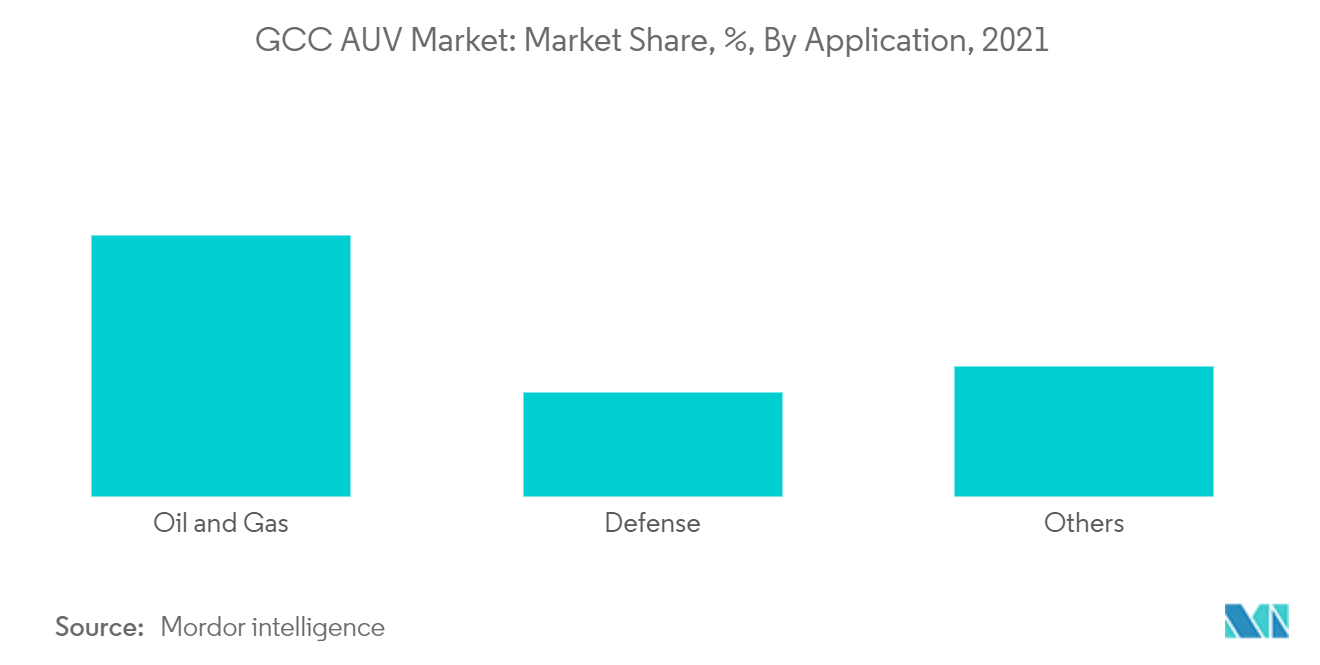Market Trends of GCC AUV Industry
This section covers the major market trends shaping the GCC AUV Market according to our research experts:
Oil and gas Segment to have a Significant Share in the Market
- The dependence on oil and gas is increasing, and it still relies heavily on petroleum-based products. The oil and gas industry displays immense influence in international politics and economics.
- In the GCC regions, a number of offshore oil and gas fields have been explored in recent years, and countries in the region have increased expenditures for exploration and production activities in the offshore sector.
- Oil and gas drilling rigs can operate in water depths of two miles. Many of these deepwater wells and pipeline systems rely on uncrewed underwater vehicles to help perform installations, inspections, repairs, and maintenance.
- Monitoring and deployment are often challenging in adverse subsea conditions, creating operational, environmental, and technical challenges. These factors accelerated the development of new technologies in the AUV market in recent years.
- Artificial intelligence technology has developed substantially in recent years. Companies operating in the AUV industry have integrated these technologies into their products to enhance the value generated for end users.
- AUVs are used for positioning and guidance for sub-sea infrastructure construction, monitoring, and survey missions.
- Hence, owing to the above points, increasing investment in AUV will drive the market during the forecast period.

Saudi Arabia fastest growing region in the AUV market
- In 2021, Saudi Arabia is the world's second-largest crude oil producer, accounting for about 12.5% of the crude oil produced. The country produced about 10.95 million barrels per day in 2021. The country is also one of the largest crude oil exporters in the world. Moreover, Saudi Arabia accounted for the second-largest proven oil reserves in the world, after Venezuela, in 2020.
- Saudi Arabia is in the process of expanding its existing oil & gas fields. Major expansion projects include the Berri field and the Marjan Oil field. The Berri field is located partly onshore and partly offshore on the east coast of Saudi Arabia. It is being expanded under the Berri Increment Program (BIP) to double its crude production capacity to 500,000 barrels per day (BPD) by 2023. The project is scheduled to commission in 2023, with an estimated investment of USD 6 billion. This project is expected to drive future demand for ROV and AUV markets.
- Saudi Arabia has maintained its position among the world's largest offshore oil-producing countries for a while now. The country also has many huge offshore fields beside the Safaniya oilfield, such as the Marjan oilfield, Manifa oilfield, and others. The country has a long history of offshore oil and gas production, with the first production starting in 1957 from the Safaniya oilfield.
- The Safaniyaoil field is located in the Arabian Gulf. It is the world's largest offshore conventional oil field in terms of recoverable reserves and production capacity. It is estimated to contain 37 billion barrels of oil and 5,360 billion cubic feet of natural gas. It has a production capacity of 1-1.5 million barrels of heavy crude oil daily.
- Hence, owing to the above points, Saudi Arabia is expected to see significant market growth in the AUV market during the forecast period.


